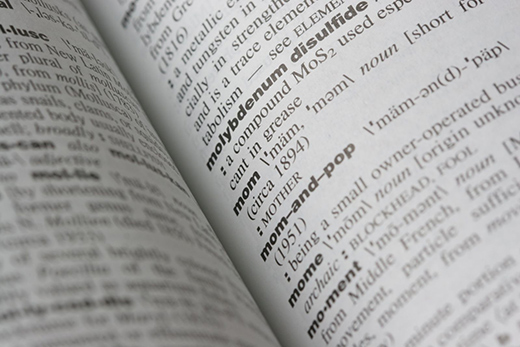The other day, my son asked me why blizzards are hazardous. The most interesting part of his question was the way he said the word hazardous. He pronounced it incorrectly, with a long a: HAYzardous. This told me he’d never heard the word spoken aloud before. However, when I probed him on the word’s meaning, he knew it exactly. How?
long a: HAYzardous. This told me he’d never heard the word spoken aloud before. However, when I probed him on the word’s meaning, he knew it exactly. How?
He came across the word in a book he was reading. He didn’t know what it meant, but he figured out the meaning using context clues. Sometimes an unknown word can stop a reader in his tracks, shutting down comprehension. But if the reader has the ability to figure the word out, comprehension can continue, and the new word becomes part of the reader’s vocabulary.
According to the research, vocabulary and comprehension are strongly linked. Students with low vocabulary scores tend to have low comprehension, and vice versa. Students acquire vocabulary incidentally through exposure to words at home and at school—by listening and talking, by reading books with adults, and by reading widely on their own.
Students, especially struggling readers, also benefit greatly if they are taught strategies for vocabulary acquisition. Vocabulary instruction should aim to engage students in actively thinking about word meanings, the relationships among words, and how we can use words in different situations. Effective strategies for vocabulary instruction include:
Student-Friendly Definitions: The meaning of a new word should be explained to students rather than just providing a dictionary definition.
Defining Words Within Context: The most effective time to introduce an unknown word’s meaning is often at the moment the reader meets the word in the text.
Using Context Clues: Students should learn to infer the meaning of a word by looking closely at surrounding text.
Sketching Words: For many students, it is easier to remember a word’s meaning by making a quick sketch that connects the word to something personally meaningful to the student.
Applying Words: When students are challenged to apply new words to their own experiences, they have another opportunity to deeply process its meaning.
Analyzing Word Parts: If students know the meanings of root words and affixes, they are more likely to understand a word containing these word parts.
Semantic Mapping: Semantic maps help students develop connections among words--for example, by writing an example, a non-example, a synonym, and an antonym.
Developing Word Consciousness: Students who are word conscious are aware of and interested in the words around them. Teachers can promote word consciousness by helping students use:
- Language categories: Students learn to make finer distinctions in their word choices if they understand the relationships among words, such as synonyms, antonyms, and homographs.
- Figurative language: The ability to use figures of speech is also a part of word-consciousness. The most common figures of speech are similes, metaphors, and idioms.
We’ve strongly incorporated vocabulary development into each of our products. If your students are using a Read Naturally intervention, there are many ways to help ensure they are building vocabulary and increasing comprehension.
Ways to enhance vocabulary development in Read Live include:
- During the Cold Timing step, a student should click on unknown words to hear the words pronounced immediately.
- During the Read Along step, a student should click on highlighted vocabulary words to see and hear the definitions.
- During the Pass step, the teacher should review the words that the student found difficult in the Cold Timing and/or Practice step(s) by clicking the Story Details tab on the Pass/Review Work screen.
- The Wordtastic vocabulary game is available when the student is waiting for the teacher before the Cold Timing and Pass steps. The student selects synonyms or antonyms for words of similar difficulty to the student's Read Naturally Live level. The student can click individual words to hear them pronounced.
Ways to enhance vocabulary development in Read Naturally Encore include:
- The teacher should ask the student to underline any unknown words during the Cold Timing, Read Along, and/or Practice steps.
- The teacher should require the student to look up the underlined words in the glossary or in a dictionary.
- If the underlined word is in the glossary, the student should read the definition while listening to the definition on the CD.
- The teacher should discuss the meanings of the underlined words with the student.
Please refer to this page on our website for more information on how to use vocabulary instruction strategies with your students. Also note that we offer a highly effective, research-based tool specifically focused on vocabulary development. Read more about our Take Aim at Vocabulary program. We also offer a highly engaging app that is easy to use in school and home, which makes vocabulary development more entertaining than ever.
After I answered my son’s question about blizzards, I high-fived him for figuring “HAYzardous” out as he read. If we can help you mitigate the hazards of low vocabulary, please get in touch. We’d love to lend our support.
 Share your student’s success story—nominate him or her for our Star of the Month award. Win a Barnes & Noble gift card for the student and a Read Naturally gift certificate for your class!
Share your student’s success story—nominate him or her for our Star of the Month award. Win a Barnes & Noble gift card for the student and a Read Naturally gift certificate for your class!
Post a New Comment